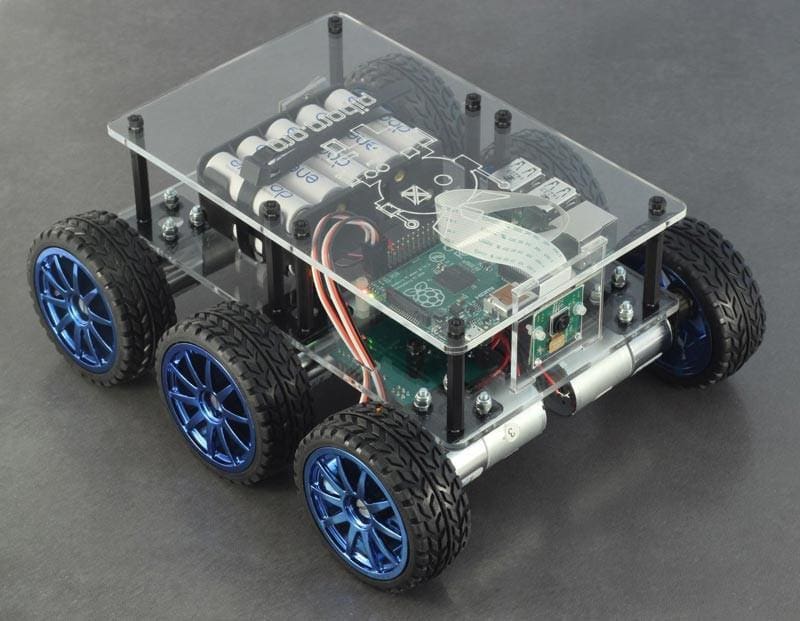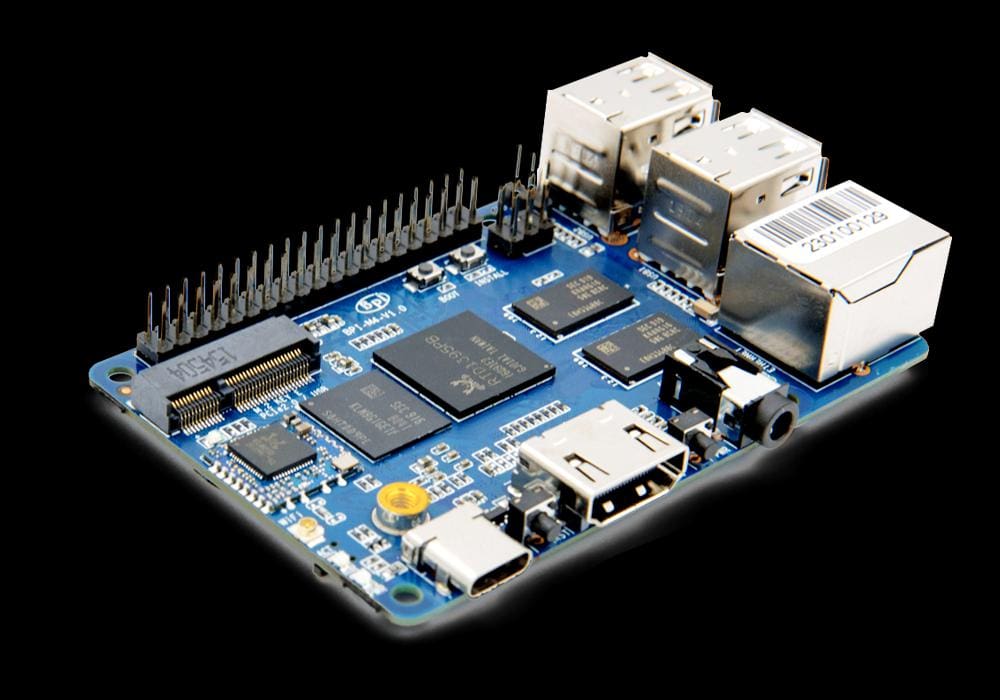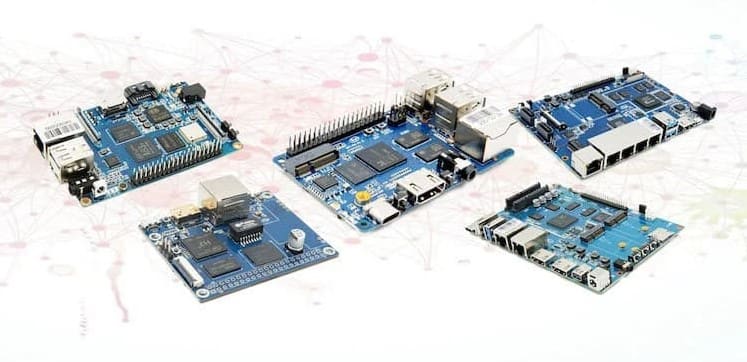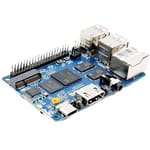Open Source Bananas

The Banana Pi will sound familiar to those who’ve heard of or used a Raspberry Pi. Essentially, they’re similar in terms of their function but vary when it comes to performance and I/O.
Though this board is relatively new to the market, the Banana Pi has promising growth potential, especially given what it offers. With native support for Linux and Android, it can be used for the same purposes as other single-board computers (SBCs).
Like the Raspberry Pi, the Banana Pi can be used for a wide range of projects. Robotics, DIY cluster networks, the possibilities go on and on.
To better understand the computing capabilities, let’s take a look at the specifications of the main model before identifying use cases and comparing the board to the Raspberry Pi.
Specs Review

Fortunately, we’ve reached the point where first-generation iPhone-sized SBCs are both powerful and energy efficient. Banana Pi’s are no exception.
Let’s take a look at the Banana Pi M4, which shares the iconic Raspberry Pi form factor.
Specifications:
- CPU: Realtek RTD1395 ARM A53 Quad-Core 64-bit
- GPU: Mali 470 MP4 GPU OpenGL ES 1.1/2.0
- Memory: 1-GB DDR4 (optional 2-GB version available)
- Storage: 8 GB eMMC onboard flash memory, MicroSD slot (up to 256 GB)
- Network: 10/100 Mbit/s Ethernet, Wi-Fi 802.11 b/g/n/AC, Bluetooth 4.2
- Video output: HDMI port with multi-channel audio output support 1080P H.264 H.265 2K/4K
- Audio output: 3.5-mm jack and HDMI
- USB ports: 4 x USB 2.0 ports, 1 x USB 2.0 Type C
- PCIE: M.2 Key E slot PCIE 2.0 and USB 2.0
- GPIO: GPIO (x28), Power (5V, 3.3V and GND), UART, I2C, SPI, or PWM
- Power input: 5V 2A over Micro USB (Type C) or PoE Support
- Size and weight: 92 × 60 mm, 48 grams
- OS: Android and Linux
Once again, these are just the specifications for the M4. For a plethora of other models with a variety of specifications, check out the full Banana Pi lineup.
Applications

The main reason you would use a computer board like the Banana Pi would be for its power. These are relatively powerful boards that can handle intensive tasks, especially if clustered: The Banana Pi is very capable of functioning in a responsive network cluster. Speaking of efficiency, a cluster of SBCs can be more cost-efficient than single high-performance chipsets.
Banana Pis come with up-to-date specs for an SBC and are also customizable thanks to the ports available. Some even come with a built-in M.2 port to hook up an SSD without any hassle.
Compared to the Raspberry Pi

Sure, the Banana Pi is similar to the Raspberry Pi, but they’re not entirely the same.
The main advantage of the Banana Pi is the multitude of available configurations. Some projects call for a better CPU with less focus on video or audio connections. Others may require high-end networking connections with no need for a high-performance GPU. Banana Pis come in many configurations in comparison to the more limited range available from their main competitor.
Another factor to consider is the reduced price. With the wider selection of devices available, you’re more likely to find a board that perfectly suits your needs – without any unnecessary extras – which could save you some money.
Wrapping Up

All in all, the Banana Pi is a great addition to the market of SBCs. The wide range of configurations and competitive pricing make this board highly relevant. Don’t be fooled by the copycat naming scheme: These boards are highly capable for many DIY projects!
(Lead image source: Rami Ayasso / All3DP)
CERTAIN CONTENT THAT APPEARS ON THIS SITE COMES FROM AMAZON. THIS CONTENT IS PROVIDED ‘AS IS’ AND IS SUBJECT TO CHANGE OR REMOVAL AT ANY TIME.
